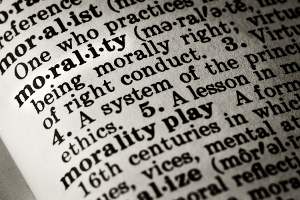When discussing stories or novels, we often talk about voice. The voice carried the story, we say. Or I loved the writer’s voice. But what exactly is the writer’s voice?
Often, by ‘voice’ we really mean style – the distinctive way the writer uses language. This makes sense, considering that style is the most obvious element of voice. Voice also incorporates tone, diction and narrative structure, as well as the author’s values and her authority – in other words, her control over the subject and the writing.

The same applies to writing. An effective voice is attuned to the writer’s message, purpose, story, and readers. Here, because I hope to get my points across without sounding stuffy, I’m using a chatty instructional voice. If I were writing this piece for a technical journal, I’d use formal diction and a more authoritative tone.
With fiction, each genre tends to have its own conventions. Literary fiction focuses on character and the language is usually lyrical and the structure organic. Yes, all novels require vivid writing, but in other genres – romance, paranormal fiction or thrillers, for instance – flowery prose matters much less than a taut, engaging plot.
Don’t get me wrong: rules are meant to be broken. Just remember: readers bring their own expectations to your book. Breaking rules, flouting convention, turns some readers off. Maybe that’s OK – you want to tell an unconventional story. Hybrid forms – literary thrillers, for example, by their very nature bend rules. But to avoid alienating or disappointing your readers, break rules only if you have a good reason.
Style
To adjust your writing style, simply change your language and sentence structure. Again, literary fiction is generally written in lyrical or figurative language and the sentences are tightly crafted. In a police procedural, on the other hand, the language is simpler and the sentences, while loosely constructed, tend to be more direct.
Consider this sentence from the story ‘A Hanging,’ by George Orwell:
‘He and we were a party of men walking together, seeing, hearing, feeling, understanding the same world; and in two minutes, with a sudden snap, one of us would be gone – one mind less, one world less.’
Note how the rhythm of the parallel structure – seeing, hearing, feeling, understanding – in the first half of the sentence draws us into the dramatic latter half; here, with the two introductory clauses – ‘and in two minutes, with a sudden snap’ – Orwell builds to the snap of death and then drives his point home with the gorgeous metaphor ‘one mind less, one world less.’ Notice too that the author carefully balances the first and second parts of the sentence, while themeatically – beginning with life, the men sharing a world, and ending in the stark reality of death – he turns the sentence on its head.
This deliberately crafted sentence invites us to stop, think, consider. In a thriller, the same sentence would slow the pace and feel awkward, perhaps even annoying.
Tone
Diction
To alter tone, try changing your diction. Chatty, informal language – language you’d use with a friend – feels intimate, and works well in popular fiction, like Chick Lit or YA. If you’re dealing with a heavy subject, such as the death of a child, depending upon context – who’s narrating the story and the reason the narrator is using this particular tone – too much levity could come across as heartless or disrespectful.
When we overhear people talking, we often make assumptions about both the speakers and their relationship based on their tone of voice. The same happens with stories: tone influences the reader’s perception of both the characters and narrator.
Compare:
Mary wandered merrily down the street, absently dragging her jacket.
Mary drifted down the street like a bumbling idiot, dragging her jacket.
The action is essentially the same, but the tone and diction paint vastly different pictures. The first suggests an affinity with Mary or, again depending upon the context, generosity on the part of the narrator; the second, harshly critical sentence suggests animosity toward the character or nastiness on the part of the narrator.
Pace
Tone can also be altered with pacing. As we see in the Orwell excerpt, tightly crafted sentences slow the reader down and invite us to deliberate. For faster pacing, use shorter, simpler sentences, and get to the point by eliminating any inessential detail.
Compare:
As she entered the empty apartment, she noticed the ruffling curtains in the living room at the far end of the apartment. I closed the window this morning, she thought. There was a fire escape right outside the window. She wasn’t stupid enough to leave it open. Suddenly, as if she’d come to, the mess registered. Her heart thundering, she took in the upturned furniture, the scattered paper, and the broken glass, and she realized with a deep, sudden dread that her home had been ransacked.
As she entered the empty apartment, she noticed the ruffling curtains. Weird, she thought. I closed the window this morning. Suddenly, as if she’d come to, the mess registered – upturned furniture, scattered paper, broken glass. Her heart thundered.
Structure
Structure refers to a story’s internal logic, or the relationship among the various parts. Complex plots are often linear – they progress in a straight line, from point A to B to C – one o’clock, two o’clock, three o’clock; day one, day two, day three. Linear structures are easy to follow, so readers are less likely to get lost. Noting the passage of time also creates a sense of urgency. Stories may also be structured organically – that is, with an internal logic intended to reflect an author’s meaning or theme.
Altering structure can change a story completely. As with all elements of voice, the structure should serve the writer’s purpose and suit the story and the audience.
Values
Unlike other elements of voice, values are difficult to change. Values – religious, political, or philosophical beliefs – are internal; our core beliefs make us who we are.

Readers also bring their own values to their reading. As a result, readers may make incorrect assumptions – assume we condone situations or approve of the language, behaviors and beliefs of all our characters. While we have no control over readers’ beliefs or assumptions, we can reduce confusion by writing clearly and precisely.
Authority
Authority refers to the writer’s confidence or control of the material. Readers trust authoritative voices. Which would you rather listen to? A stumbling, wishy-washy voice? Or a strong, credible speaker, who lulls you and takes you out of yourself?
How do we attain authority? By doing our homework. If our story takes place in an unfamiliar time or locale, for example, to pull readers in, to suspend disbelief, we must provide specific, concrete temporal and/or physical detail. To write with authority, we’ve got to know what we’re talking about. It’s that simple. Spending ample time developing characters, location and plot gives us power and control.
Be aware of and get comfortable with your narrative voice. Have fun. Experiment. Try changing elements of your narrative voice and notice the difference it makes!



Very informative, but I fear I will have to digest this in bite-sized pieces, lol. Saving this page for later so I can come back and digest a bit more. Thank you for discussing this often confusing element of writing. :)
Thank you so much for visiting, Cathy. I think the process of reading about writing is often very similar to writing itself: best taken in small chunks!
I found this information to be very helpful, particularly the part about organic structure. I’ve been struggling to discover how this story is going to unfold and it seems like every time I sit down to write a different voice shows up. I suppose as long as I keep persevering eventually the best way to tell the tale will reveal itself.